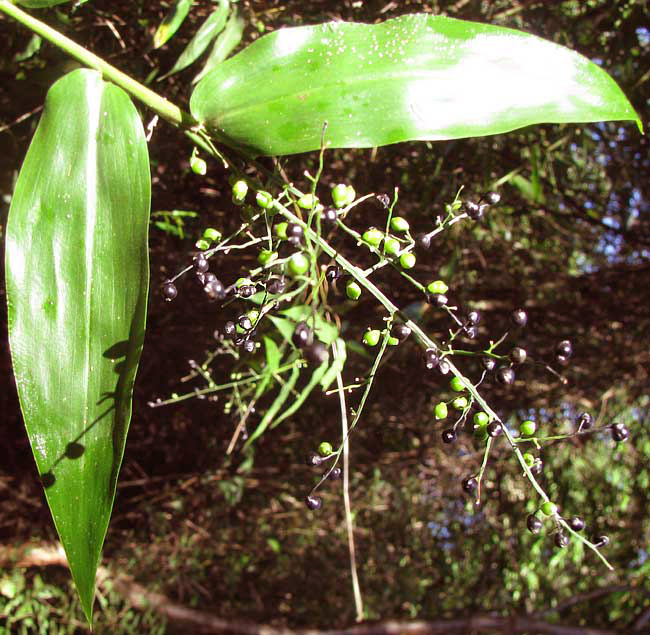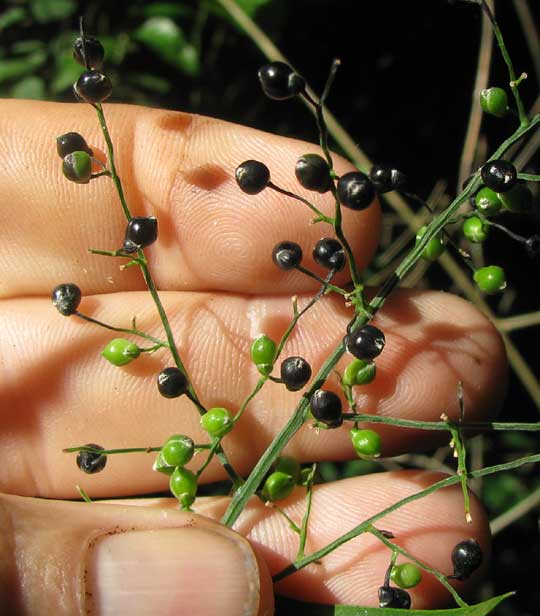Excerpts from Jim Conrad's
Naturalist Newsletter

from the October 30, 2006 Newsletter issued from near Ek Balam ±20 kms north of Valladolid, central Yucatán, MÉXICO
LASIACIS RUSCIFOLIA: A BLACK-GRAINED, WOODY, CLIMBING GRASS
A common grass likely to appear along any weedy trail through the chopped-over woods here is unlike any you're likely to see in Eastern North America, except for southern Florida.
For one thing, its main stems are woody. For another, the grass is almost like a vine the way it climbs into trees or at least scrambles over them, sometimes for fifteen feet or more. Finally, mature, grain- filled florets, or flowers, are spherical and BLACK. That's it at the top of this page. Below is a close-up of some of the mature mature florets:

This grass, sometimes known as Wild Bamboo is LASIACIS RUSCIFOLIACATA, found from Mexico and the Caribbean south to northern South America. Five Lasiacis species are listed for the Yucatan Peninsula. Features distinguishing this one include its erect stems (not running along the ground), its relatively wide leaves that often are velvety-hairy below, and its flowring branch tips not zigzagging.
Birds and possibly rodents eat and disperse the grains, plus the stems root wherever they touch the ground and are covered by leaf litter. The stems produce new sprouts whenever they're cut or damaged. In other words, this is a tough grass. It needs to be tough because it's often browsed by horses and cattle.
Also, I can't tell you the times I've been walking through the forest and got its tough stems caught between my legs, and stumbled or fallen!